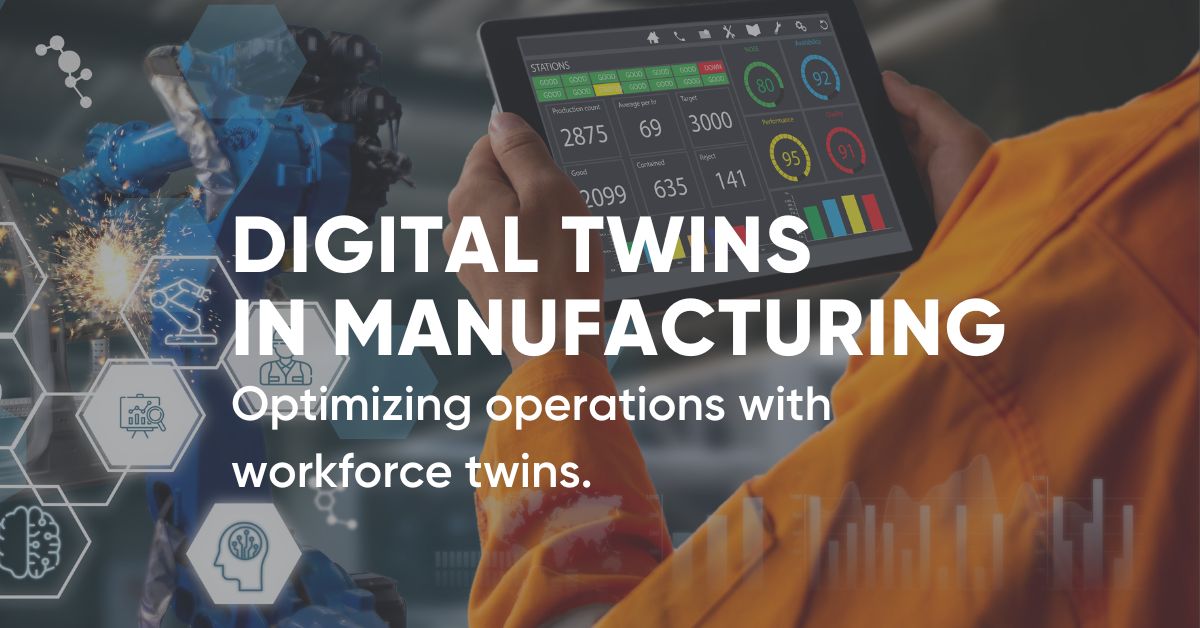Imagine a bustling automotive manufacturing plant, “Gemini Motors”, that produces a number of editions of heavy-duty trucks. Despite being a well-established player in the industry, Gemini is facing several challenges related to workforce management, which are impacting its production efficiency and profitability.
The Challenge:
Gemini Motors has been experiencing fluctuations in production output due to a lack of insight into plant operations:
- Equipment Failure: There are frequent unanticipated equipment breakdowns, leading to production stoppages.
- Staffing Challenges: The plant often has either too many or too few workers on certain shifts, leading to underutilization or overexertion of employees.
- Skill Gaps: Management is struggling to identify skill gaps among the workforce, leading to inefficiencies in task assignments and training.
The Solution:
After hearing about how other manufacturing companies have begun to use artificial intelligence to speed up productivity, boost efficiency, and improve quality, Gemini Motors evaluated multiple operations platforms and decided to work with an AI Solutions Provider to customize an AI solution for their unique requirements.
The AI solution provider recommends building out Workforce Twins to address Gemini’s challenges and optimize their manufacturing processes.
What are Workforce Twins?
Workforce Twins, often referred to as “Digital Twins for Employees,” are virtual models that simulate the entire workforce of a company, encompassing all aspects of its human resources. These digital replicas incorporate data on employees, their skills, tasks, and interactions, allowing organizations to gain a comprehensive understanding of their workforce dynamics.
A “workforce digital twin” is a cutting-edge concept in the realm of human resources and workplace management. It draws its inspiration from the field of digital twin technology, where physical objects or systems are replicated in a virtual environment to monitor, simulate, and optimize their real-world counterparts. In the context of the workforce, a digital twin represents a virtual replica of an organization’s entire workforce, including its employees, their skills, roles, and interactions. This digital representation enables organizations to gain deep insights into their workforce dynamics, ultimately leading to more informed decision-making.
With a workforce digital twin, organizations can model and analyze various scenarios, such as workforce planning, talent management, and productivity optimization, in a risk-free virtual environment.
This technology leverages data from various sources, including HR records, performance metrics, and even external market data, to create a comprehensive and dynamic model of the workforce. By using advanced analytics and artificial intelligence, organizations can predict talent gaps, identify skill deficiencies, and design more effective training and development programs.
The Strategy:
The AI solution provider suggested Workforce Twins as a solution for a few reasons. With a little cooperation from Gemini Motors, Workforce Twins could provide the following:
Predictive Maintenance
Gemini Motors integrates historical equipment maintenance data and real-time sensor data with its Workforce Twin. The digital replica continuously monitors the condition of machines, predicting potential breakdowns based on patterns and wear and tear.
- Benefit: By receiving early warnings of impending equipment failures, Gemini Motors can schedule maintenance during planned downtime, reducing unplanned stoppages by 30%.
Staffing Optimization:
The Workforce Twin analyzes historical production data, market demand, and employee performance metrics. It uses AI algorithms to determine the optimal number of workers needed on each shift and assigns tasks based on skill sets and availability.
- Benefit: Gemini Motors sees a 15% reduction in labor costs as they no longer overstaff during slow shifts, and workers are more evenly distributed across busy periods.
Skill Gap Analysis:
By integrating training records and skill assessments into the Workforce Twin, Gemini Motors identifies skill gaps among employees. The system recommends targeted training programs and reassignments to bridge these gaps.
- Benefit: Skill gaps are reduced by 20% within the first year, leading to a 10% improvement in production efficiency as workers become more proficient in their tasks. Employees also have a higher level of satisfaction as they get the right training to be successful in their jobs.
The Results
After implementing Workforce Twins, Gemini Motors experienced a remarkable transformation:
- Equipment Failure is significantly reduced, resulting in a 20% increase in production output.
- Labor costs decrease by 15%, thanks to more efficient staffing allocation.
- Employee satisfaction improves as they receive more suitable task assignments and opportunities for skill development.
- Gemini Motors’s profitability surges, thanks to the 25% increase in overall productivity.
In this hypothetical scenario, the adoption of Workforce Twins not only resolves Gemini Motors’ workforce management challenges but also positions the company as a more competitive and agile player in the automotive manufacturing industry. By leveraging data-driven insights and predictive analytics, Gemini Motors has successfully optimized its operations and achieved substantial improvements in efficiency and profitability.
Ready to discover an AI solution for your business? Talk to our team of experts.

